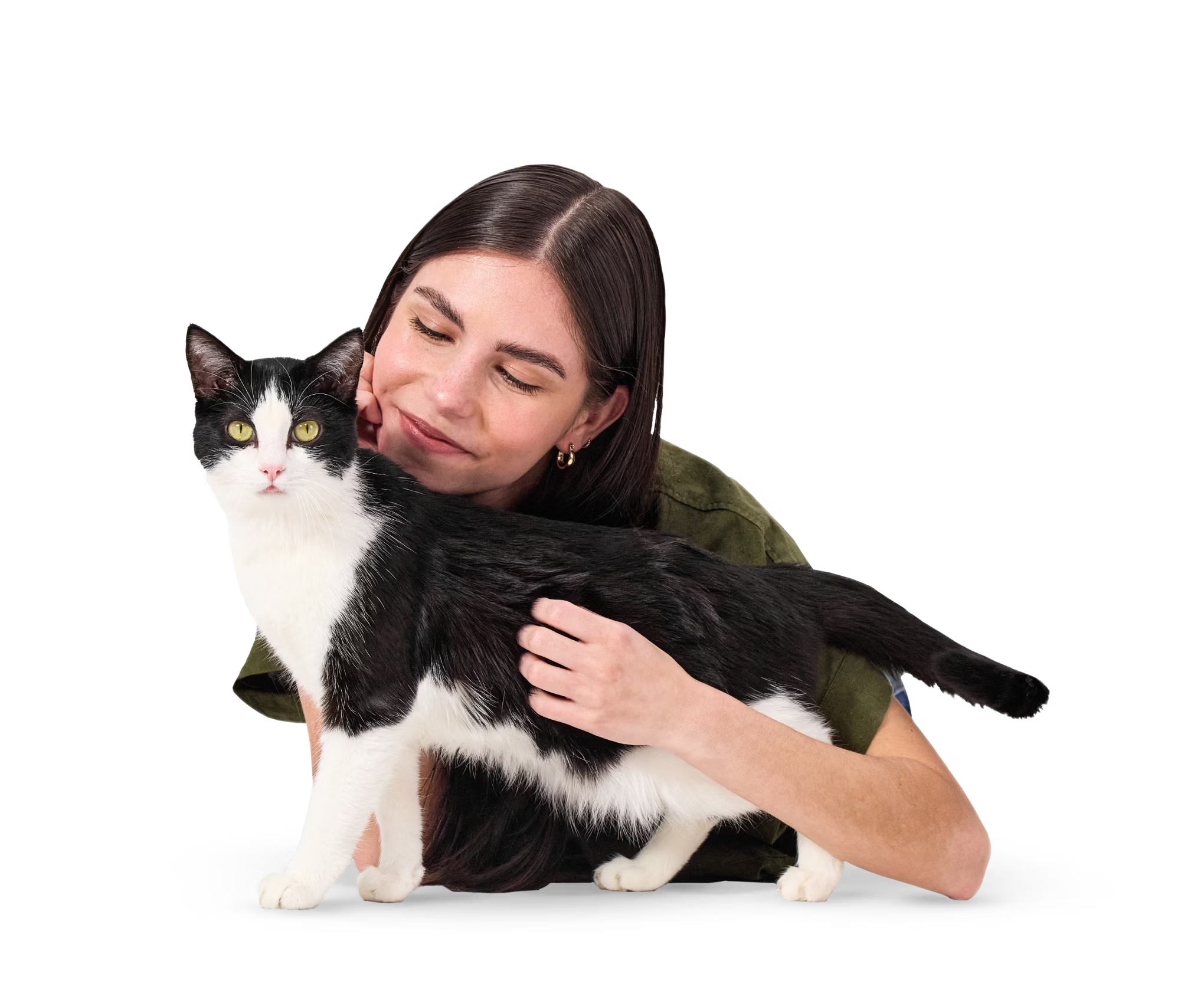Hyperoxaluria Type II
Hyperoxaluria Type II is a kidney disorder leading to severe weakness and kidney failure in young cats.
Key Signs
Kidney dysfunction, Muscle wasting, Lack of appetite, Dehydration, Weakness
Age of Onset
0 to 2 yrs
Juvenile onset
Inheritance
Autosomal Recessive
For autosomal recessive disorders, cats with two copies of the variant are at risk of developing the condition. Cats with one copy of the variant are considered carriers and are usually not at risk of developing the disorder. However, carriers of some complex variants grouped in this category may be associated with a low risk of developing the disorder. Individuals with one or two copies may pass the disorder-associated variant to their kittens if bred.
Likelihood of the Condition
High likelihood
At risk cats are highly likely to show signs of this disease in their lifetime.
What to Do
Here’s how to care for a cat with Hyperoxaluria type II
Partner with your veterinarian to make a plan regarding your cat’s well-being, including any insights provided through genetic testing. If your pet is at risk or is showing signs of this disorder, then the first step is to speak with your veterinarian.
For Veterinarians
Here’s what a vet needs to know about Hyperoxaluria type II
Hyperoxaluria is a rare hereditary renal disorder. Clinical signs of the disorder are due to nephrocalcinosis and renoliths caused by excessive oxalate accumulation in the kidneys. This causes a reduction in renal function. Affected kittens may show muscular atrophy, dehydration, anorexia, and weakness which may present prior to or after the onset of renal dysfunction. Affected kittens develop acute end-stage renal disease typically between five and nine months of age.
Treatment is supportive care; however, due to the progressive nature of the condition, clinical signs typically lead to euthanasia for welfare reasons.
For Breeders
Planning to breed a cat with this genetic variant?
There are many responsibilities to consider when breeding cats. Regardless of test results it is important that your cat is in good general health and that you are in a position to care for the kittens if new responsible owners are not found. For first time or novice breeders, advice can be found at most cat registry websites.
This disease is autosomal recessive meaning that two copies of the mutation are needed for disease signs to be shown. A carrier cat with one copy of the Hyperoxaluria type II mutation can be safely bred with a clear cat with no copies of the Hyperoxaluria type II mutation. About half of the kittens will have one copy (carriers) and half will have no copies of the Hyperoxaluria type II mutation. Kittens in a litter which is expected to contain carriers should be tested prior to breeding. Carrier to carrier matings are not advised as the resulting litter may contain affected kittens. Please note: It is possible that disease signs similar to the ones caused by the Hyperoxaluria type II mutation could develop due to a different genetic or clinical cause.
Technical Details
| Gene | GRHPR |
|---|---|
| Variant | G>A |
| Chromosome | D4 |
| Coordinate | 60,968,927 |
All coordinates reference FelCat9.0
We’ve spent the past 20+ years devoted to DNA. Our team of scientists and vets have spent decades developing the most accurate pet DNA test. Because every pet deserves to have their whole story told. We’ve collaborated with leading academic institutions, innovative research labs, and Banfield Pet Hospital™ to make our process exceptionally precise, fast, and affordable.

References & Credit
Credit to our scientific colleagues:
Goldstein, R. E., Narala, S., Sabet, N., Goldstein, O., & McDonough, S. P. (2009). Primary hyperoxaluria in cats is caused by a mutation in the feline GRHPR gene. Journal of Heredity, 100, S2–S7. View the article